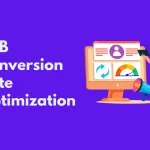
Attaining and maintaining success in the modern, ever-changing business world calls for sound decision-making. This calls for perfect planning to go through the data and tap into the power of business intelligence (BI). This is where you capitalize on analytics tools and processes to get relevant insights from the raw data. It translates to better decision-making and overall success as a company.
BI involves gathering, examining, and understanding data to steer strategic decisions. Ranging from market patterns and consumer behavior to internal processes. It empowers companies to convert unprocessed data into practical insights. The steps in the BI process include:
- Preparation of data, where data sets are structured and modeled for analysis
- Analytical querying of the prepared data
- Dissemination of key performance indicators (KPIs) and other findings to business users
- Use of the information to influence and guide business decisions
Here are crucial tips for making the most of BI when making decisions:
Set Clear Goals
Ask yourself what you’re trying to achieve and after how long. For instance, if the mission is enhancing your efficiency, figuring out customer preferences, or spotting trends in the market, knowing what you want will steer your BI plan the right way. Knowing what your company needs explicitly allows for a good match between BI tools and your key goals. Laying out a straightforward path sets the stage for a successful BI setup. It is a good idea to review the objectives to see whether there is a need for adjustments.
Data Quality
You will get poor insights if you begin with poor-quality data. Check and clean your data often to keep it accurate. Having the correct information will prevent any negative consequences. Investing in data quality tools can have a significant return on investment. A robust system for checking data quality makes sure your BI outputs reliable information that you can use to make significant strategic calls. This helps your business be perfect in making fine and specific decisions.
Continuous Training and Skill Development
BI tools and tech constantly change quickly, and you need to ensure your team keeps learning new things. Regular training and skills development help them take full advantage of BI. Consider teaming up with BI companies for their training or giving your team online courses.
When choosing a BI training program, find institutions offering quality education. They should have specialized studies, such as a Doctorate in Business Administration. When enrolling in an online DBA in business intelligence program:
- Focus on accreditation
- Research the program’s reputation
- Align the curriculum with your career goals
- Check the faculty expertise, ensuring they have relevant knowledge in the field
- Asses available technology, support services, and flexibility for a well-rounded learning experience
- Understand admission requirements
- Explore available financial aid options, scholarships, and payment plans
- Connect with alumni and current students for valuable insights
Utilize Cloud
The cloud BI tools empower companies to make rapid, informed decisions. They are scalable and adaptable, and you can access them from anywhere. Organizations can process data loads with the cloud and extract valuable insights. Cloud BI is also fantastic for collaboration. This allows team members to access information on demand.
Cloud technology can scale with your business, allowing your BI resources to remain relevant and suitable for future needs. It also plays a significant role in making the databases more accessible and secure. This encourages remote working, which helps the business become more inclusive.
Dashboards
Business intelligence is effective when the dashboards are not complicated or cluttered. This allows users to make informed decisions. Aim for creating dashboards that are straightforward and user-friendly for all. Training or instructions could enhance users’ ability to use these tools. When the dashboards are navigable and comprehensible, users are likely to engage with the data and contribute to more sound decision-making.
Enhanced Strategic Planning
Rather than only responding, focus on formulating more effective strategic plans by recognizing emerging trends. Employees who use their entire day or week to collect data for a task won’t produce insights quickly enough to seize opportunities. Their time could be used more by interpreting the data, making decisions, and taking action based on it. These are the tasks that add value.
Establishing a reliable BI system enhances data quality. During the build and test phase of the system, many data quality issues are discovered and corrected. The BI system also promptly presents data to a diverse range of users. This helps to identify any new problems quickly.
Integrate BI into Company Culture
BI needs to blend into a company’s culture to be effective. It’s essential to nurture a love for data among your team, urging them to rely on cold, hard facts. This approach gives everyone a feeling of responsibility. It falls on leaders to champion a culture that prioritizes data. When leaders emphasize the importance of BI and show how it improves choices, they set the standard for everyone else.
Augmented Analytics
Seek an intelligent solution that simplifies BI. Ensure they incorporate augmented analytics with built-in machine learning. This type of solution assists users in:
- Collecting
- Analyzing
- Interpreting
- Communicating information while automating and simplifying tasks
Your solution should automate data preparation and gather information from various sources. This speeds up the process and minimizes potential errors. It should also enhance your analysis by suggesting new data sets for inclusion.
Data Security and Compliance
Protecting sensitive information is crucial. When using BI tools, you must protect your data and follow laws like GDPR or HIPAA. If someone breaks into your data, it’s not only your company’s name at risk. It also makes people doubt the usefulness of the info your BI tools provide. To protect your BI data sources:
- Assess your BI risks
- Use encryption
- Install robust access control
- Use strong user authentication methods
- Track user activities
- Keep software updated
- Use firewalls
- Secure APIs
- Backup data regularly and have a recovery plan
- Train employees on security best practices
- Establish data governance policies
- Conduct periodic security audits to identify and address vulnerabilities
Data Governance Framework
A solid data governance framework ensures your BI insights are consistent and reliable. Set clear roles for who owns data, who checks its quality, and who decides on who can access it. With good governance, you reduce mistakes, make people more responsible, and make your BI system more trustworthy.
Remember to return to your data governance rules often to keep up with your changing business and the new laws. A robust framework lays the groundwork for decisions you can count on. It makes you ever-competitive no matter the magnitude of the industry’s dynamics.
Collaboration Across Departments
Cut department barriers and encourage teamwork to get the most out of BI. Everyone should be involved, not only in IT but also in marketing, finance, and operations. Encourage teams from different areas to swap ideas, work together on analyzing data, and help make big decisions together. This team effort lets you see your organization from all angles, leading to more smart choices. It ensures that BI insights match the company’s main aims. Have scheduled and regular meeting sessions through which you’ll discuss the emerging issues and how best to react to them.
Mobile BI for Quick Decisions
In our world that’s always on the move, it’s crucial to have BI insights handy on mobile devices. This helps leaders make swift decisions no matter where they are. Mobile BI solutions come with voice-activated access and instant alerts. You can interact with your data through a search-based method. With Mobile BI, they can tap into vital info at any given moment.
Decisions don’t have to wait until they’re back at their desks. Look for BI tools with robust mobile features. It will help individuals in charge to keep in the loop and act when new chances or issues arise. Doing this on the move makes them more agile and quick to react during strategic planning.
Feedback for Better BI
Create systems where people can give their thoughts on how sound the BI system is. Ask them if the insights are helpful and keep checking how much of an impact BI has on making choices. You can then make changes as you go, guided by what people say they need. What’s crucial is coming up with different channels through which feedback will follow. This makes your BI improve as your organization changes. Updating the system based on user input will improve its ability to help you plan things.
Cost-Benefit Analysis of BI Investments
It is essential to figure out what you are getting back from your spending on BI. Know how much financial value your BI efforts add. It might make things run smoother, boost your income, and cut costs. Keep an eye on this analysis and freshen it up as your use of BI grows. Know exactly how BI helps your pocketbook. It will guide you in deciding whether to keep investing in it and how to tweak it to get more out of it.
Stay Agile and Adaptable
The business world is changing, so being ready to adapt is crucial for keeping up. Your business intelligence plan should be adaptable to:
- Changing market trends
- Technology updates
- Company goals
Agile BI implementation to enable quick adaptation to new opportunities or obstacles. Keep a close eye on your BI plan and tweak it as your company’s demands shift. A BI setup that can change as needed will help your company make smart choices in uncertain times.
Endnote
Business intelligence is not only about technology. It is about making sure your business moves forward in the right direction. You get all the essential details about everything. From talking to customers to tweaking your products. This enables you to make informed decisions and navigate your business towards success.








Leave a Reply